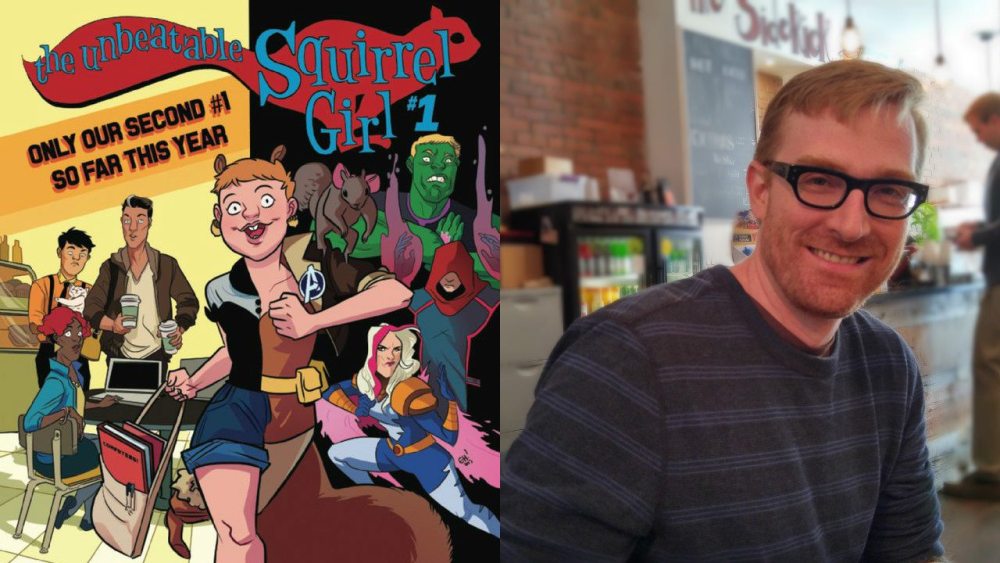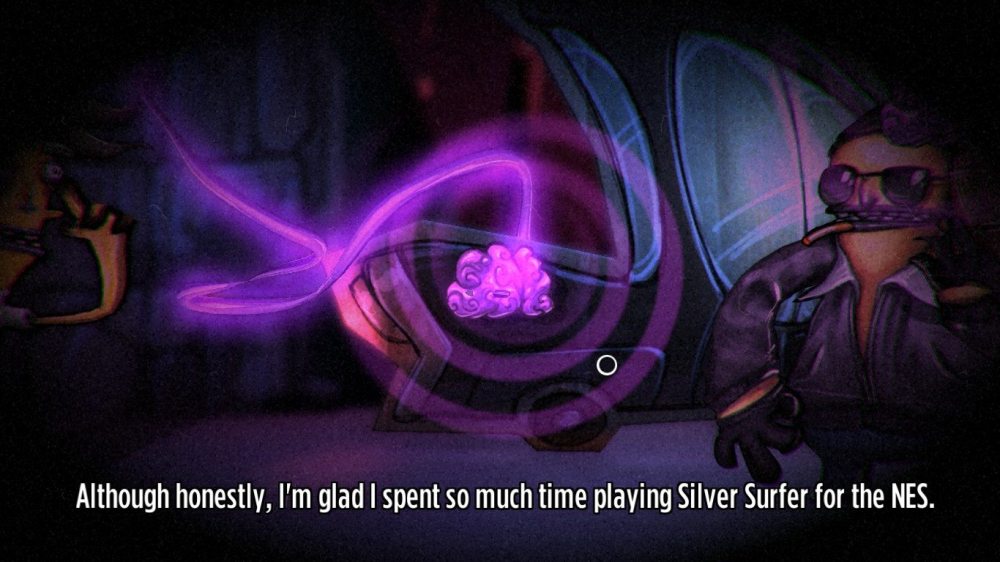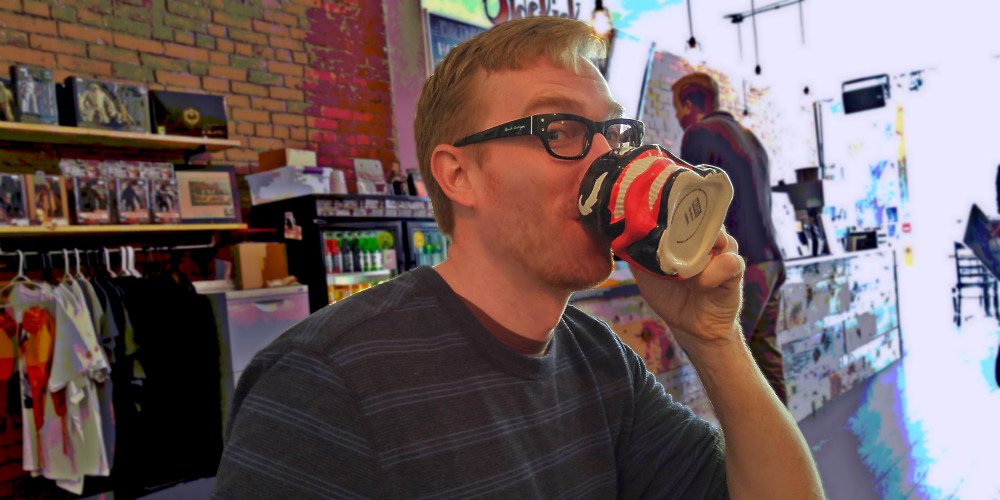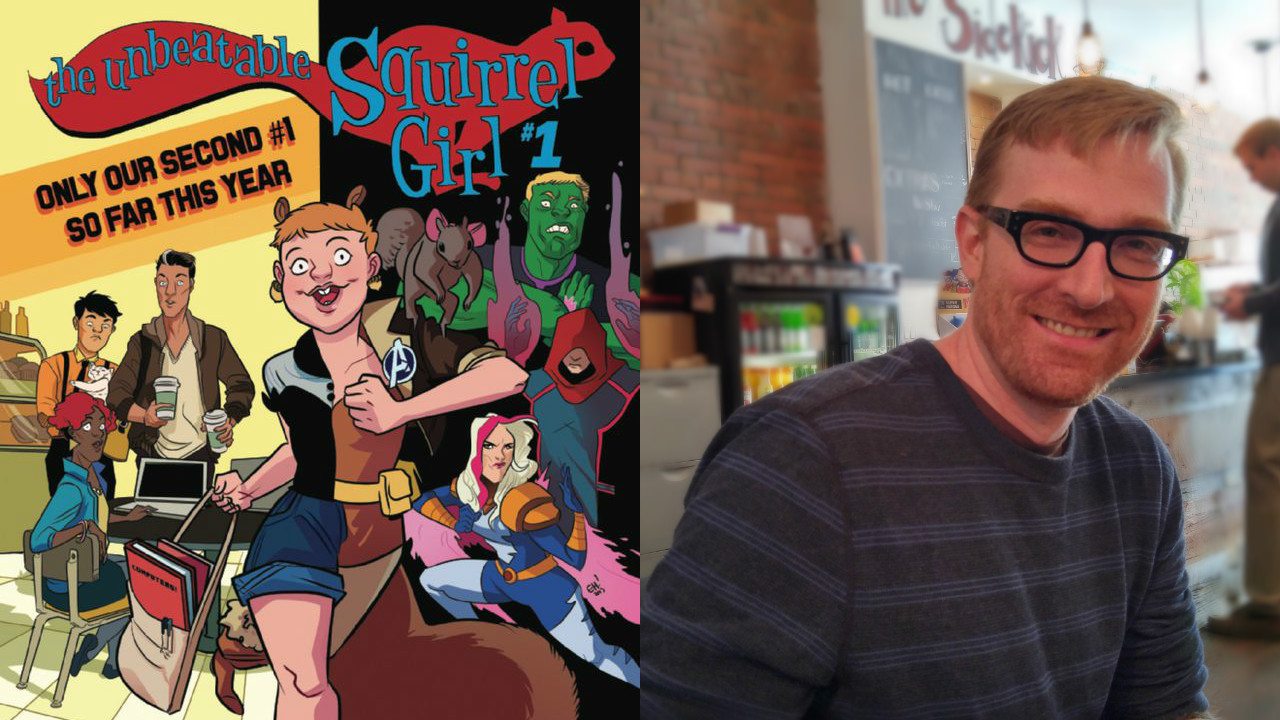
2015 has been a big year for Marvel Comics. On the silver screen, Phase 2 of the Marvel Cinematic Universe wrapped up with The Avengers: Age of Ultron, and Phase 3 started with Ant-Man. The debut of Daredevil on Netflix gave them their second successful TV series, and has prompted more series to be greenlit.
Nothing has been so drastic as the changes made in the source medium, comic books. The Secret Wars story arc collapsed all the alternate and What If…? universes into one. The outcome will be a patchwork of characters and comic series that have proven themselves successful. Some of those series were only launched or rebooted recently, like Spider-Gwen, Howard the Duck, and the new Ms. Marvel. Their inclusion in the new universe is a testament to how well they were received by fans.
One big hit this year was The Unbeatable Squirrel Girl. Following an initial eight issue run at the beginning of the year, the series has been rebooted as part of the all-new Marvel Universe–making this the second Squirrel Girl #1 for 2015. The issue is on stands October 28th.
Before giving Squirrel Girl new life, writer Ryan North enjoyed success writing Dinosaur Comics, a creative collaboration with William Shakespeare in To Be or Not To Be, and the Adventure Time comic book series. Ryan was a natural fit for an all-ages, humorous side to the Marvel Universe. He sat down with GeekDad to talk about this series, and life as a writer.
GeekDad: So what’s new in the Squirrel Girl #1 of this month and what’s different from the last number one?
Ryan North: It’s tricky because we wanted to–me and Chip (Zdarsky) doing Howard (The Duck) and the Squirrel Girl both launched this year and they’re both getting new number one’s this year. And, so it’s hard to be all new, all different when you just started and you were already all new and all different. So, I know Howard’s getting a new hat, which is a big hook. Squirrel Girl’s now in second year and she’s got a new hair style, so it’s a big change.
GD: So it’s all about head fixtures
RN: Yeah, yeah, yeah. No, but it’s tricky because you want it to be something that a new reader can pick up that also works for existing readers. So it’s not repetitive, but also it’s cool and fun and interesting. You can treat it like Squirrel Girl #9 or you can treat it like Squirrel Girl #1. It took a long time to strike that balance. It was a tricky challenge, I thought.
GD: You introduced a few new superheroes to the Marvel Universe. Are they mutants, inhumans, just well-studied in the languages of other species? Will there be backstories?
RN: Yeah, so you’ve got Squirrel Girl, who was already there, and then there’s Chipmunk Hunk and Koi Boy. And then it was Bass Lass, but she was an imaginary character from the ’50s. I like to get more into them. They show up in the first issue, Koi Boy and Chipmunk Hunk.
I love the idea of rhyming animal names with these ridiculous powers. And it’s funny because, normally if you’re building a character you want the character to have someone that they can play off of and not be exactly the same. But then Chipmunk Hunk, Koi Boy, they’re just people with animal powers and they are very similar.

I like the fact that in real life you tend to hang out with friends who are similar to you. You don’t find someone who is good contrast so there will be high drama between your relationships. I try to keep it realistic that way, but I mean Squirrel Girl and Nancy, they are great friends, but they are not very similar people at all.
Does that make sense?
GD: That does, it actually does, yeah. You always have that one friend that you don’t have a whole lot in common with. They wind up becoming your best friend as a result.
RN: Yeah.
GD: What was the inspiration behind the Yellow Text, and will that be in the new series?
RN: Yes, absolutely. That goes back to my web comic, Dinosaur Comics, where if you hold the mouse over (the comic image), you get an extra little joke. Then when I was writing the Adventure Time comics I wanted to put little text beneath it with the same idea, like a little hidden joke beneath the page.
And it was funny because my editor loved it and her editor hated it. And so it was a compromise–in Adventure Time number one there’s the alt text only on half the pages. [LAUGH] And then reviewers loved it and readers loved it. So we were like, okay, well then I can do whatever I want. And so when I started writing Squirrel Girl for Marvel, I was like, “Hey, I wanna do this alt text.” And luckily no one said “no” at that point. They all liked it.

And all we did was we changed it from the first issue to the second issue to make it a little bit bigger because my idea is kind of that it’s hidden, and so you might not notice it right away, which is fun. And then when you reread the book, it’s like, oh the book has more for me, what a surprise.
But we’re getting feedback that it was too hidden, and people were using magnifying glasses to read it. So we made it a little bit bigger. But I like it, it’s a way to put more jokes on the page. Comics aren’t the cheapest hobby in the world and I think that’s fair. And it’s a way to give you more content. More jokes. Literally, cramming jokes into the margins.
GD: A lot of girls are finding it easier to get into comics with the new heroes in the last year, like Spider-Gwen and Ms. Marvel. A lot of boys are also for the first time experiencing strong and independent female characters or heroes in the mainstream comics.
RN: I think it’s great that you’re getting more diverse heroes and also more diverse creators. I mean, I am a heterosexual white guy, so I’m not the most diverse guy in the world, but there are other people that are people of color doing great work. Erica Henderson, the artist in Squirrel Girl, is terrific.
The point of (Squirrel Girl) is not to show–is not to be just diverse, or show a female character, just be like look, we’ve got your female character, we’ve got your person of color. It’s to tell an awesome story and these things are all incidental. And it’s not hard, right, it’s not hard to, if you have five characters, to not make all those five characters white men. [LAUGH]
Very easy when you’re imagining people. You can imagine whoever you want. So I’m really glad that’s happening and that it’s become almost a trend; if you can call it a trend, that’s great.
And there’s stuff like I mentioned, Ms. Marvel, there’s Batgirl at DC (Comics), which is terrific. There’s Lumberjanes at BOOM! The nice thing about these books is that, yeah, they’ve got women in these leading roles, but you don’t have to be a woman to read it just as you don’t have to be a man to read anything else.
And so I love seeing pictures of these little kids, boys and girls, saying they love Squirrel Girl, and it’s like, yeah! I didn’t write it for girls, I didn’t write it for boys, I wrote it for everyone, and I’m glad it’s being enjoyed in that way. I think that’s the whole thing with All Ages, is that when you write All Ages, you want it to be for all ages, not just for little kids.
So you try to write it to be for everyone. That’s my idea anyway.
GD: You worked on a number of other IP’s including Squirrel Girl, Adventure Time, and even with William Shakespeare’s Hamlet.
RN: [LAUGH] I collaborated with Shakespeare.
GD: Even with Dinosaur Comics, while it’s your own creation, it has a fixed structure that you have to work with every time you write. What appeals to you, about developing characters in an established world?
RN: It’s fun because a lot of the time you don’t have to develop characters. Like, I can have Squirrel Girl play off Iron Man and everyone knows who Iron Man is. I don’t have to introduce him to her and say, okay, Tony Stark made this suit, really rich, kind of a jerk, you get all that for free. So from a writing perspective, it’s really easy and it’s fun too, Squirrel Girl’s relationship with Iron Man is in almost every issue in a recap page.

They sort of tweeted each other, and oh, I like how sassy they are to each other, in a comic itself, his presence is always there. I was like, this Twitter feud, which I think is grand. So that’s one thing.
The other thing is, when you’re working in an established universe, you’re sort of playing in other people’s sandboxes all the time. So you say, “I wanna put Kraven in this issue.”
And Marvel will say like, “Sure, let’s check with the Spider-Man office.”
And they go to, I imagined, a physical office labeled “Spider-Man.” They say, “Hey, is it okay if Squirrel Girl meets Kraven?”
And they say, “Sure, but just so you know, Kraven’s immortal right now, he’s been cursed and he can’t die [except] by Spider-Man’s hand.”
And I say, “Okay, I can work with that”
I would’ve never thought of that in the first place, but it actually gave Squirrel Girl the hook to talk to Kraven in the first, first issue.
So you get these little pieces of things that you wouldn’t have written yourself that you can use in your own writing. It’s very collaborative in this really weird way. Where you’re sort of collaborating with other stories rather than other people. And you’re sort of building up this shared universe of narratives that cross and go in these crazy directions.
You also want it to be consistent, like a notebook. I want people to pick up Squirrel Girl and get the complete story and not be like oh, now I have to read five other issues to understand everything that’s going on. So, that’s what the Deadpool cards in the books are about.

I wrote them because I thought they were funny, and then I realized it works as a really terrific short hand where this character shows up, and then you’ve got a Deadpool card, and you see here’s her name, here’s her back-story, here’s her powers, done. It’s like one panel, and you’ve got all your exposition out of the way. It was a nice surprise to discover that’s actually how those Deadpool cards worked, and they weren’t just funny jokes. I stumbled into that one entirely.
GD: Good way of breaking the fourth the wall without breaking the fourth wall.
RN: And I also like the idea that Deadpool is publishing these cards somewhere. Just has a little printing press to make his own merchandise, I think that’s funny.
GD: Squirrel Girl has been unbeatable in the past by taking advantage of enemies who underestimate her. In your series, she often disarms them by understanding their motivation and coming to a solution that benefits them both. It’s very non-traditional in comic books to go that way; why did you choose to do that?
RN: It’s funny, I feel like I got a cheat sheet on Squirrel Girl. In final versions, she imagines things that she could do, like stuff squirrels down his pants or pepper some squirrels. And then she works out what his actual problem is and pretty soon they both get what they want.
In my first draft, she just stuffed squirrels down his pants. I was like, “Done.”
My editor, Will Moss, was like, “You know, I always kind of saw Squirrel Girl as a kind of person who would help people solve their problems.”
It was like reading the answer sheet in the back of a teacher’s book. I was like, “Of course that’s who she is–this makes total sense.”
So I rewrote it, and it works, I think; they have this woman who, she has these super powers, but she recognizes that a lot of problems can’t be solved by just punching things, which I think, of course, comes to real life a lot. There are very few problems in my own life that I solve by punching someone.
So it’s nice that she has these powers, and she does use them as she gets into fights, and wins fights too. But her first instinct, when confronted by someone, is not to throw a punch and that’s kind of realistic. It makes her more of a relatable hero, hopefully, unless the reader’s, like, “I would have thrown a punch, I would’ve punched Venom. That would have shown him who’s boss.”
GD: To Be or Not to Be was a bit darker humor, but are there other genres you’ve wanted to dabble in?
RN: To Be or Not to Be was. I kinda wrote it for the same audience as Hamlet, since it is a choose-your-own-adventure-style version of Hamlet. I’m just finishing up now a book called Romeo and/or Juliet. Along similar lines, a choose your own path version of Romeo and Juliet. Which is fun. That’s the first, I guess, technical romance I’ve ever written.
I was really scared because a romance is about people falling in love. And if you don’t care about these people and care about them liking each other, you’re not gonna be engaged or interested in whether or not they fall in love. But I got it to work.
It was hard because Romeo is a pretty well-defined guy. He’s interested in women. Full stop. But Juliet’s a lot harder to get a grasp on. She’s not as well defined. In the play, she gives the best speeches, but they’re usually what Romeo said to her. She’s more nebulous. I had a bit of trouble doing it ’til I figured out who she was.
So I guess to answer the question, I did a Romance.

I’d like to do something more with video games, like actual interactive stuff. With books, like a choose-your-own-adventure–style book, it’s interesting because you have fewer choices and it’s very hard to keep track of “state.” In a game, let’s say you pick up a key or don’t pick up a key. Then you can use that key ten minutes later to open up that secret door, and that’s no big deal.
In a book, they give you the choice to pick up the key or not pick up the key, those go to two separate pages. And then if the same things happen until you get to the door, I’m duplicating all those pages just to keep track of whether or not you have the key. So it’s very expensive in terms of page count and word count. The alternative is just to say, do you have the key? [LAUGH] Then you cheat. I never looked at that, I always cheated. So the idea of having state for cheap is really appealing to me. Keeping track of variables and having them impact the story.

GD: There’s been a lot written about Romeo and Juliet. In order to understand Juliet better, did you have to do a lot of research for that?
RN: I try to stick to the text because usually when you are doing something with Romeo and Juliet, at least in terms of films, you are adapting it in some way. Like, I could have them doing a lot of singing and dancing, just watching the musical. I try to keep pretty close to the text, I mean it’s weird.
You look at To Be or Not To Be and Ophelia in that story. In my version (she) is kind of very different from Ophelia in Shakespeare’s version because I’ve forgotten what Ophelia was like. I thought she was this really kick-ass lady, and when I reread the play, I was like, “Oh my God no.”
She does nothing and then gets killed, or kills herself. It’s disappointing. And so in my version she’s way more awesome. But then you can get to those storylines by playing in a certain way. And that was kind of a neat balance to make her be authentic to herself in my book, but also be able to hit the point she has to hit in Shakespeare’s life.
That’s fun, you’re playing with the text, right–you’re collaborating with a man who died hundreds of years ago. And I think the most egotistical thing I’ve ever done is on the cover of To Be or Not to Be, it says, “To Be or Not to Be by Ryan North” and then, “and William Shakespeare and you.”
So I gave myself top billing above Shakespeare.




